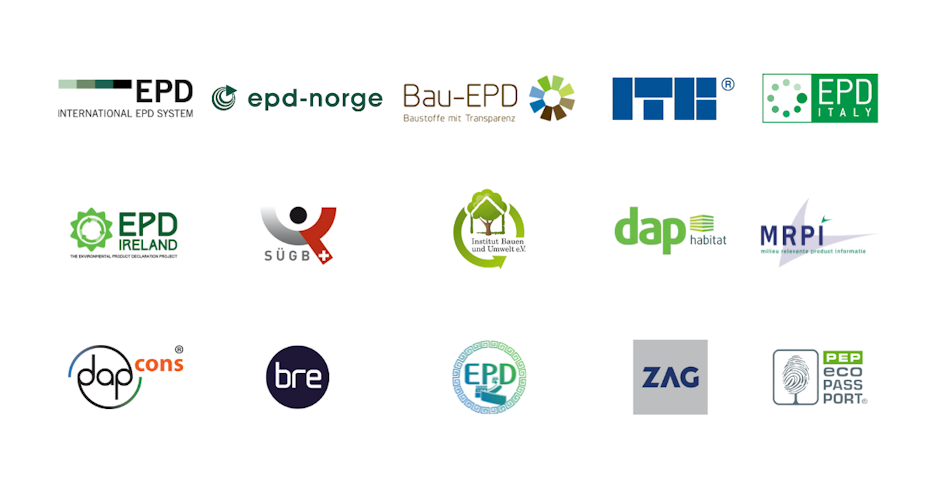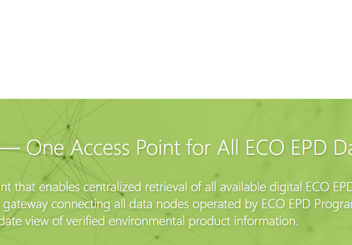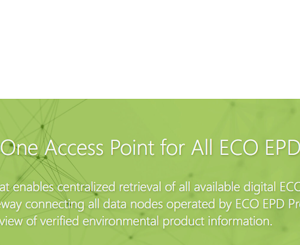EPD Programme Operators Issue Call to Action on EU Construction Products Regulation


The joint position paper raises concerns over the 'Worst-Case Approach' and mandatory 'Initial Site Inspections' in the revised Construction Products Regulation (Regulation (EU) 2024/3110). Together with 14 other EPD Programme Operators, the International EPD System calls for a constructive dialogue with EU policymakers.
The undersigned EPD Programme Operators of ECO Platform welcome the revised Construction Products Regulation (CPR, Regulation 2024/3110), in particular the recognition of environmental performance as an essential requirement in the Declaration of Performance and Conformity (DoPC).
This marks a crucial step towards advancing sustainability in the construction sector. However, we wish to raise serious concerns regarding two elements currently under discussion in the context of the CPR Acquis process: the introduction of the "worst-case approach" and the requirement of mandatory initial site inspections.
The signatory Programme Operators are the initiators of this position paper. With this initiative, we aim to represent the shared concerns of the EPD community, and we call upon all stakeholders to read, share, and support this position by signing it.
Background and Position
To begin with, the proposed worst-case approach requires manufacturers to declare the environmental performance of their products based on the most adverse possible scenarios for production processes, rather than the existing approach in EPDs that uses averaged data collected over an extended period and weighted across multiple production sites. This shift constitutes a fundamental departure from the procedures well-established for EPDs that have been refined over 25 years. The introduction of worst-case scenario declarations significantly increases complexity, operational burdens, and costs for manufacturers, particularly SMEs and those with multiple production sites or complex supply chains.
It should be also noted that the worst-case approach is not standardized. While briefly mentioned in EN 15941:2024^[1]^, the standard itself emphasizes that EPDs based on this approach are normally reserved for products with minimal impact at the building level. The lack of clarity surrounding its application significantly impacts the complexity of the declaration for stakeholders, raising various questions and making implementation open to interpretation while reducing homogeneity.
Under the worst-case approach, manufacturers are compelled to issue multiple environmental declarations for a single product, as each production site or scenario may have significantly different worst-case environmental impacts. Merging these variations into a single declaration, using the worst-case approach, would result in misleading and excessively pessimistic data, inaccurately inflating the declared environmental impacts. Consequently, manufacturers must produce multiple declarations, creating substantial administrative complexity, increased compliance costs, and challenges in managing sensitive operational data. This additional burden would be particularly challenging for SMEs. Moreover, it diverts focus from meaningful sustainability improvements, incentivizing manufacturers to avoid the worst-case rather than promote overall sustainability performance improvements.
Currently, ECO Platform and its members are supported by approximately 400 globally shared qualified validators (verifiers, in EPD terminology). Adopting the worst-case approach would significantly multiply the number of EPDs requiring validation, overwhelming the validation system. As also pointed out by other stakeholders [2], this surge in validation demand would critically impact the quality, integrity, and reliability of environmental data due to overstretched validation resources leading to an increased cost burden for the notified bodies and ultimately to the manufacturers.
Finally, for customers, shifting to the worst-case approach would result in receiving misleading, overly conservative, and less relevant environmental data. Customers rely on accurate and actionable information to guide procurement and sustainability decisions. This approach would force them to navigate a maze of multiple declarations for the same product but produced at different sites, making it more difficult to compare and make informed choices.
We also acknowledge that, as declared worst-case values must be equal or worse than actual product performance, there is a risk for an increase in legal disputes if discrepancies arise, i.e., if real performance turns out to be slightly worse than the declared values. This introduces significant ambiguity and legal uncertainty, as manufacturers remain responsible and may face legal challenges to prove compliance. This is particularly problematic combined with the current lack of clear guidelines on how to calculate the worst-case values.
Our position aligns closely with Glass for Europe^[2]^ and Construction Products Europe^[3]^, recommending the maintenance of the existing EPD framework of averaged and weighted average, both in data collection as well as performance, which has demonstrated effectiveness over the past two decades. Moreover, preserving the current EPD approach ensures the comparability of existing products and safeguards the long-term viability of the EPD system during this transition.
There has also been growing discussion on making on-site inspections mandatory during the validation of DoPCs. However, much like the worst-case approach, this requirement would once again place a heavy administrative burden on industries and drive costs without delivering any real sustainability benefits. As discussed, the pool of reliable auditors shared by different bodies is limited. The product can be manufactured in different countries and multiple manufacturing facilities. Making on-site inspections compulsory will lead to increased administrative burden, slowing the process and further increasing the cost of publication of DoPCs.
The same process can be effectively conducted through virtual inspection and, the use of supporting documents such as invoices of the claims made by the manufacturers. Standard ISO 17029^[4]^ related to the conformity assessment also emphasizes the use of on-site inspection as one of the ways along with appropriate evaluation of data and plans, reviewing documentation, and performing alternative calculations. This strengthens the case for on-site visits only when deemed necessary by the validator.
Finally, as the EU stands at the intersection of driving sustainability forward while maintaining global competitiveness and operational viability for its businesses, adopting the worst-case approach and making site visit mandatory would significantly undermine these objectives without meaningfully contributing to environmental transparency. There is a need for a pragmatic approach that reduces the complexities, administrative burdens and costs associated with declaring environmental performances in DoPCs. ECO Platform and its members, therefore, strongly urges the European Commission to adopt the current EPD approaches for declaring average environmental performance and validating the declared values without mandatory site visits, which are based on established and clear procedures and standards. This would balance environmental responsibility, industry competitiveness, and customer trust.
Our Position on Worst-case Approach
We urge the European Commission to reject the general implementation of the worst-case approach and instead retain the established EPD method using time- and site-weighted averages. To meet the legitimate objective of ensuring declared data is overly optimistic; clear and enforceable methodological rules should be introduced, based on proven practices. This will ensure environmental data remains credible, feasible, and useful – and will prevent unintended negative effects on building-level sustainability assessments.
Our Position on initial site inspections
We strongly recommend that initial site inspections remain optional and subject to professional judgment within a standardized risk-based framework. This will preserve system integrity while ensuring feasibility, cost-efficiency, and scalability.
Call to Action
This position paper represents a collective voice of the undersigning ECO EPD Programme Operators committed to supporting workable, credible, and widely accepted environmental data frameworks. We invite all stakeholders in the construction and sustainability sectors to support this initiative by endorsing this letter, sharing it within your networks, and contributing to a constructive dialogue with EU policymakers.
Let us work together towards a regulation that is both ambitious and implementable — safeguarding environmental integrity while ensuring operational feasibility for industry.
References
[1] European Committee for Standardization. (2024). EN 15941:2024 – Sustainability of construction works: Data quality for environmental product declarations of construction products. CEN.
[2] Glass for Europe. (2025, February). Rules for the declaration of environmental characteristics of construction products. Glass for Europe.
[3] Construction Products Europe. (2025, March). LCA information in CE marking – Background document. Construction Products Europe.
[4] International Organization for Standardization. (2019). ISO 17029:2019 – Conformity assessment — General principles and requirements for validation and verification bodies. ISO.
The Signatories
International EPD System | EPD Norge | Bau EPD | ITB EPD Program | EPD Italy | EPD Ireland | Schweizerischer Überwachungsverband für Gesteinsbaustoffe (SÜGB) | DAPhabitat | Institut Bauen und Umwelt e.V. (IBU) | Milieu Relevante Product Informatie (MRPI) | DAPcons | BRE Global | EPD China | Slovenian National Building and Civil Engineering Institute (ZAG) | PEP Ecopassport

*The position paper was originally published on April 7, 2025 on ECO Platform.









